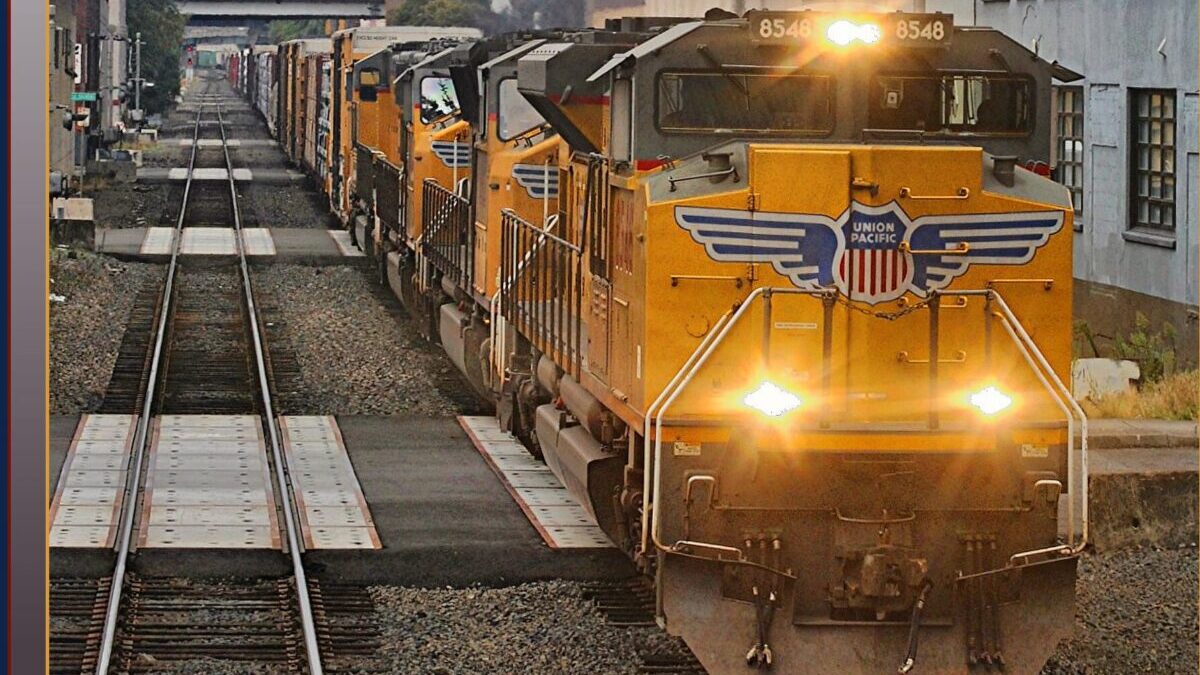When Congress swooped in to avert a railroad strike, it imposed a deal upon four labor unions that had voted against it. Now, a crew size rule is being considered that would be a second blow to the collective bargaining process — imposing by federal mandate what was once a negotiation between labor and carrier and creating rippling economic inefficiencies.
The collective bargaining process is the longstanding bedrock of the rail sector that affords both labor and companies compromise and flexibility. Like all negotiations, it allows for economically efficient outcomes through voluntary bargaining. The number and responsibilities of railroad personnel are one piece of this puzzle, but one which the Federal Railroad Administration (FRA) is putting under its thumb.
Besides usurping a contract term from negotiating parties, the main problem with the FRA’s crew size rule is that there is insufficient data to justify it. Accident reporting forms lack categories to identify the number and location of personnel on trains, meaning the FRA has no dataset available to justify its regulation that two crew members in the controlling locomotive are needed to prevent or mitigate incidents.
What is more, with the level of technology integrated into the rail sector, and Positive Train Control technology in particular, personnel are not always needed to prevent certain issues. Human error has led to about 35 percent of train accidents over the last two decades. The technology available today is able to address, either directly or in an assisting role, approximately 47 percent of human-caused errors. This leaves about 53 percent in need of human solutions, yet even this includes problems that can be solved without additional crew inside the locomotive.
Narrow Target for such Massive Intervention
At best, the crew size rule is only aimed at less than 18 percent of all train accidents because certain tasks and supportive roles can be fulfilled by technology and ground-based personnel. But in reality, the crew size rule mostly targets freight carriers operating on mainline track — that is, the long and heavy-laden trains moving on long stretches of track. Yet when the data is filtered for this type of operation, we find only 1 percent of all train accidents are due to human error occurring on mainline freight operations and require personnel to address.
Mobilizing the federal government to address such a narrow subset of rail accidents is disproportionate in its costs and benefits and sets up unrealistic expectations for future collective bargaining. If this rule — a similar rule having already been withdrawn by the FRA — is challenged in court or delayed in implementation, unions may threaten to strike rather than ratify future agreements with rail carriers. The federal interference does not seem prudent and is not supported in robust and clear data.
Even if the 1 percent of accidents the rule is capable of addressing are worth the cost and effort, the available data does not demonstrate that the rule is warranted. Assessing the ability of single- and multi-person crews to prevent and mitigate accidents results in no discernable correlation either way. This is in line with findings from both the National Transportation Safety Board and the FRA itself that “[T]here is insufficient data to demonstrate that accidents are avoided by having a second qualified person in the cab. In fact, the NTSB has investigated numerous accidents in which both qualified individuals in a two-person crew made mistakes and failed to avoid an accident” and that “FRA’s accident/incident safety data does not establish that one-person operations are less safe than multi-person train crews.”
More Data Needed
What the rule would do instead is add costs to rail carriers, limiting efficient investment in research and development into and ultimately deployment of new technology that is proven to reduce costs, harm, and other negative externalities.
It is clear that more data is needed before federal rulemaking takes place. That should start with updating accident reporting forms to collect information on the number and location of crew in the moving train and others involved in any accidents. It should also include the institution of a crew size pilot program to specifically evaluate the issue at hand.
The last thing the rail sector needs is more intervention by the federal government that interferes in the collective bargaining process. If this issue can be resolved by negotiation and addressed through more technology, better training, and data collection, that’s how it should be handled. Only if this approach proves inadequate should the government be on call.









